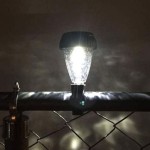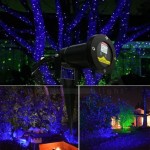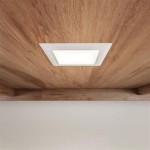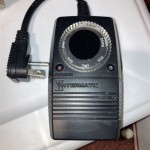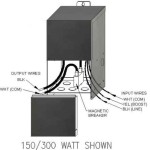Solar Powered Outdoor Lights That Stay On All Night: A Comprehensive Guide
Solar powered outdoor lights have become increasingly popular as a sustainable and cost-effective lighting solution for residential and commercial properties. The allure stems from their ability to harness solar energy, reducing reliance on traditional electricity sources and minimizing carbon footprints. However, a common concern among potential buyers is whether these lights can reliably stay on all night. This article delves into the factors affecting the performance of solar lights, exploring the technology, components, and maintenance practices necessary to ensure consistent nighttime illumination.
The appeal of solar lights extends beyond their environmental benefits. They are relatively easy to install, requiring no complex wiring or professional assistance. This eliminates the need for trenching and electrical connections, making them ideal for locations where running power lines is impractical or expensive. Furthermore, the absence of electrical cords reduces the risk of tripping hazards and adds to the aesthetic appeal of outdoor spaces.
Understanding the intricacies of solar light operation is crucial for optimizing their performance. The following sections will explore the key components, influencing factors, and strategies for achieving consistent and prolonged nighttime illumination.
Understanding the Core Components
Solar powered outdoor lights consist of several key components working in concert to capture, store, and emit light. These components are the solar panel, the rechargeable battery, the light-emitting diode (LED), and the control circuit.
The solar panel is responsible for converting sunlight into electricity through the photovoltaic effect. This process involves the absorption of photons from sunlight, which then excite electrons within the semiconductor material of the panel, generating an electric current. The efficiency of the solar panel, measured by its ability to convert sunlight into electricity, directly impacts the amount of energy available for storage and subsequent illumination.
The rechargeable battery stores the electricity generated by the solar panel during daylight hours. Various battery technologies are employed in solar lights, including nickel-cadmium (NiCd), nickel-metal hydride (NiMH), and lithium-ion (Li-ion) batteries. Li-ion batteries are generally preferred due to their higher energy density, longer lifespan, and reduced environmental impact compared to NiCd batteries. The capacity of the battery, measured in ampere-hours (Ah) or milliampere-hours (mAh), determines the amount of energy it can store and, consequently, the duration for which the light can operate at night.
The LED serves as the light source, converting electrical energy back into visible light. LEDs are highly efficient and long-lasting, consuming significantly less energy than traditional incandescent or halogen bulbs. This efficiency is crucial for maximizing the runtime of solar lights, as it minimizes the energy drain on the battery. The brightness of the LED, measured in lumens, determines the intensity of the light emitted.
The control circuit manages the charging and discharging of the battery, ensuring optimal performance and preventing overcharging or deep discharging, which can damage the battery and shorten its lifespan. It also typically includes a light sensor that automatically turns the light on at dusk and off at dawn. More sophisticated control circuits may incorporate features such as motion detection, dimming capabilities, and adjustable brightness settings.
Factors Affecting Nighttime Illumination Duration
Several factors influence the duration for which solar powered outdoor lights can stay on all night. These include sunlight exposure, battery capacity and age, LED efficiency, and environmental conditions.
Sunlight exposure is arguably the most critical factor. The amount of sunlight that reaches the solar panel directly affects the amount of energy that can be generated and stored in the battery. Solar lights placed in shaded areas or locations with limited sunlight exposure will not be able to fully charge the battery, resulting in shorter nighttime illumination. Optimizing the placement of solar lights to maximize sunlight exposure is essential for achieving consistent nighttime performance. This may involve trimming trees or adjusting the orientation of the lights to face the sun.
The battery's capacity and age significantly impact the runtime of solar lights. A higher capacity battery can store more energy, allowing the light to operate for longer periods. However, battery capacity gradually degrades over time due to repeated charging and discharging cycles. As the battery ages, its ability to store energy diminishes, resulting in shorter nighttime illumination. Regularly replacing the batteries in solar lights can help maintain their optimal performance.
The efficiency of the LED also plays a crucial role. More efficient LEDs consume less energy for a given level of brightness, extending the runtime of the solar light. When purchasing solar lights, it is important to consider the LED's efficiency, typically measured in lumens per watt. Higher efficiency LEDs will provide brighter illumination for a longer duration.
Environmental conditions can also affect the performance of solar lights. Cold temperatures can reduce battery capacity, while cloudy or rainy weather can limit sunlight exposure. In regions with prolonged periods of inclement weather, solar lights may not be able to fully charge, resulting in shorter nighttime illumination. Choosing solar lights with larger solar panels and higher capacity batteries can help mitigate the impact of unfavorable weather conditions.
Strategies for Ensuring All-Night Illumination
To maximize the likelihood of solar powered outdoor lights staying on all night, several strategies can be implemented. These include optimizing placement, selecting appropriate batteries, performing regular maintenance, and considering energy-saving features.
Optimizing the placement of solar lights is paramount. Ensure that the solar panels receive direct sunlight for as many hours as possible each day. Avoid placing lights in shaded areas or locations where they are obstructed by trees, buildings, or other objects. Experiment with different locations to find the optimal spot for sunlight exposure. Periodic adjustments may be necessary as the position of the sun changes throughout the year.
Selecting appropriate batteries is crucial for achieving consistent nighttime illumination. Opt for solar lights with high-capacity Li-ion batteries, which offer a longer lifespan and better performance compared to NiCd or NiMH batteries. Consider the battery's voltage and amp-hour rating, ensuring that it is compatible with the solar panel and LED. Regularly check the battery's condition and replace it when its performance diminishes.
Regular maintenance is essential for prolonging the lifespan and optimizing the performance of solar lights. Clean the solar panel regularly to remove dirt, dust, and debris that can reduce its efficiency. Use a soft cloth and mild detergent to gently clean the panel's surface. Inspect the battery compartment for corrosion or damage and clean it as needed. Replace any damaged or corroded components. Periodically check the LED for brightness and replace it if it becomes dim or fails to illuminate.
Consider solar lights with energy-saving features, such as motion detection and dimming capabilities. Motion-activated lights only illuminate when motion is detected, conserving battery power and extending the runtime. Dimming capabilities allow you to adjust the brightness of the light, further reducing energy consumption. Some solar lights also offer adjustable timers, allowing you to set the duration for which the light stays on after dusk.
Furthermore, understanding the limitations of solar technology is essential. Solar lights are not a substitute for high-powered wired lighting systems. Their performance is dependent on environmental factors and component quality. By carefully considering these factors and implementing the strategies outlined above, users can significantly improve the reliability and duration of nighttime illumination provided by solar powered outdoor lights.

Best Outdoor Solar Lights That Ll Brighten Up The Night Time Stamped

The Best Solar Path Lights Of 2024 According To Testing Bob Vila

Outdoor Solar Garden Lights 120 Led Powered Decorative Stake Landscape Light Diy Flowers Fireworks Starburst 2 Pack Warm White Com

The Best Solar Garden Lights Of 2024 With Expert Advice

Smart Solar Multispot Black Powered Led Outdoor Ground Light Set Of 10 Diy At B Q

Beau Jardin 8 Pack Solar Powered Lights Led Path Garden Light Silver Com

Outdoor Garden Decorative Lights

Luosen Super Bright Solar Lights Outdoor Waterproof 8 Pack Up To 12 Hrs Powered Pathway Garden Auto On Off Led Landscape Lighting Decorative For Walkway Patio Yard Com

The 3 Best Smart Outdoor Lights For Backyards Of 2024 Reviews By Wirecutter

The Best Outdoor Solar Lights To Illuminate Your Yard At Night
